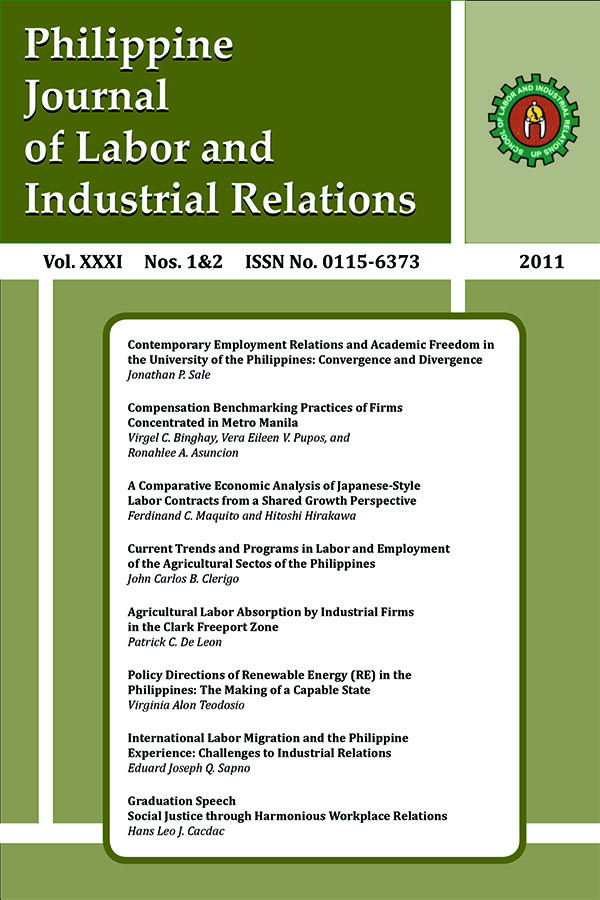A Comparative Economic Analysis of Japanese-Style Labor Contracts from a Shared-Growth Perspective
Abstract
This paper makes a stylized comparison of labor contracts of Japanese irms (J-Firm) and Anglo-American irms (A-Firm) in order to clarify micro-level mechanisms for the macro-level concept of shared growth (i.e., eficiency + equity). As such, the period of study will be the shared-growth era of Japan (circa 1950s to 1980s). The comparison ascribes to J-Firm labor contracts a set of stylized features which set it signiicantly apart from typical A-Firm labor contracts. The paper also surveys the theoretical explanations for J-Firm labor contracts, and clariies how such explanations could also contribute to shared growth. Given that the Philippines has yet to achieve shared growth, an empirical application of the above analysis to the Philippines is presented for two cases. The irst case focuses on manufacturing economic zones in the Philippines, which used data provided by the Philippine Economic Zone Authority. This analysis basically shows that stable employment practices in the economic zones, along with other J-Firm features appear to promote productivity, as measured by a production function analysis. An extension of this empirical application in the second case is undertaken for a Japanese-afiliated automotive irm operating in the Philippines corroborates the economic zone indings. This implies that manufacturing economic zones and the automotive industry could provide channels by which the shared-growth DNA could be transmitted to the Philippines.
Published
2020-09-16
How to Cite
MAQUITO, Ferdinand C.; HIRAKAWA, Hitoshi.
A Comparative Economic Analysis of Japanese-Style Labor Contracts from a Shared-Growth Perspective.
Philippine Journal of Labor and Industrial Relations, [S.l.], v. 31, n. 1&2, sep. 2020.
ISSN 0115-6373. Available at: <https://journals.upd.edu.ph/index.php/pjlir/article/view/7198>. Date accessed: 31 aug. 2025.
Section
Articles


